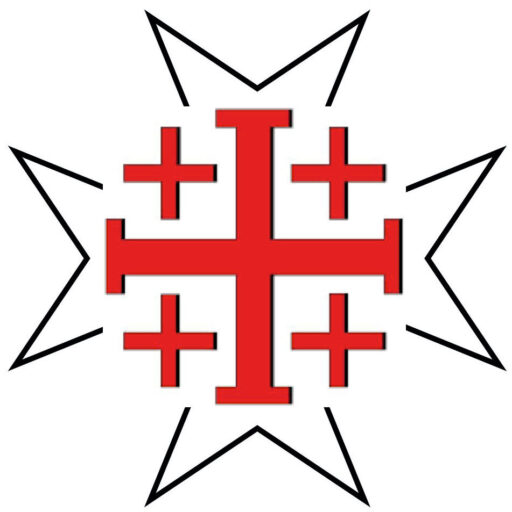
General view of the Commissariat premises
The Commissariat of the Holy Land occupies a building adjacent to the friary of Santa Marija ta’ Ġesù (Ta’ Ġieżu) in Valletta, and is connected to the same friary. The building is a typical Maltese house of the 17th century and has an exterior doorway leading into the steps of Santa Luċija Street. This lower level consists of basements with a roof of flat stone slabs resting on semi-circular arches, and which are now converted into three small conference halls where Courses on the Holy Land are offered and pilgrims are welcomed. From there a small stairway takes one up to the ground floor, consisting of a small entrance hall with an internal door leading into the friary, the old office of the Commissariat and the bedroom of the Commissary, plus a small kitchen and shaft. The office is beautifully decorated by wall paintings by the Maltese artist Rafel Bonnici Calì (1955), depicting scenes from St. Francis’ visit to Jerusalem and the Holy Sepulchre. Another staircase takes one up to the upper floors, three in all, which consist of 6 rooms, which used to serve as rooms for missionaries residing in the Hospitium Terræ Sanctæ. On the upper part of the steps, close to the roof, one can still see the graffiti on the stone slabs, probably made by some missionary to bide the time while patiently waiting to find a vessel to take him to the Holy Land. On the third floor there is a tiny chapel. The fourth floor consists of a spacious office which has been created some years ago, overlooking the friary roof and from where one gets a splendid view of Grand Harbour and Fort Saint Angelo. In this office the Commissary and his collaborators organise all the work of the Commissariat, particularly the arrangements for the pilgrimages.
Antique artefacts and works of art from the Holy Land
The ground floor of the Commissariat has a permanent exhibition of antique artefacts coming directly from the Holy Land. Many of them were brought over by Maltese missionaries who came from the Holy Land. Among the most interesting artefacts one finds porcelain plates bearing the official coat of arms of the Holy Land Custody, and particularly various objects made of mother-of-pearl. This artistic artefact is typical of the Holy Land and especially of the Christians living in Bethlehem. It was the Franciscan friars who introduced the art of mother-of-pearl around 1586 in order to provide work for the local Christians. The art has been handed down for generations and is still a source of income for a number of Christian families living in Bethlehem, even though nowadays it is produced on an industrial basis for the tourist market. There are ancient carte gloriæand the stations of the Cross made of mother-of-pearl, and they are precious because they were produced by ancient methods and manual work by the Bethlehem artists. A large Crucifix with the stations of the Cross in mother-of-pearl stands at the centre of the entrance hallway. There is also a collection of statuettes of the Child Jesus of Bethlehem, and a Neapolitan crib. The most precious among these statuettes is one of the Child Jesus in swaddling clothes. It is made in wax, and used to be venerated on the altar of St. Francis in Ta’ Ġieżu Church, and has been placed in the Commissariat for safe-keeping. Indeed, it is a property of the Commissariat, since it was made in 1726 by a Maltese lay brother residing in Bethlehem, Brother Bonaventura Fava, who had been sacristan in the Basilica of the Nativity for many years.
Model of the Holy Sepulchre
(St. Ursola Nunnery, Valletta)
An important work of art linked with the Holy Land is kept not in the Commissariat, but in the Monastery of St. Ursola in Valletta, close to the friary, where in 1584 Grand Master Cardinal Hugh Loubenx de Verdalle founded a community of cloistered Jerosolymite Nuns. Their first monastery was in Birgu, but they soon moved to the new city of Valletta. In the monastery the Nuns proudly display a small model of the Holy Sepulchre Basilica made of wood and decorated with panels of mother-of-pearl. Its dimensions are 36 x 42 cm. It has been amply documented by the Franciscan scholar Michele Piccirillo, La Nuova Gerusalemme. Artigianato Palestinese al servizio dei Luoghi Santi, Edizioni Custodia di Terra Santa 2007, pp. 77-78 and photos pp. 181-185.

